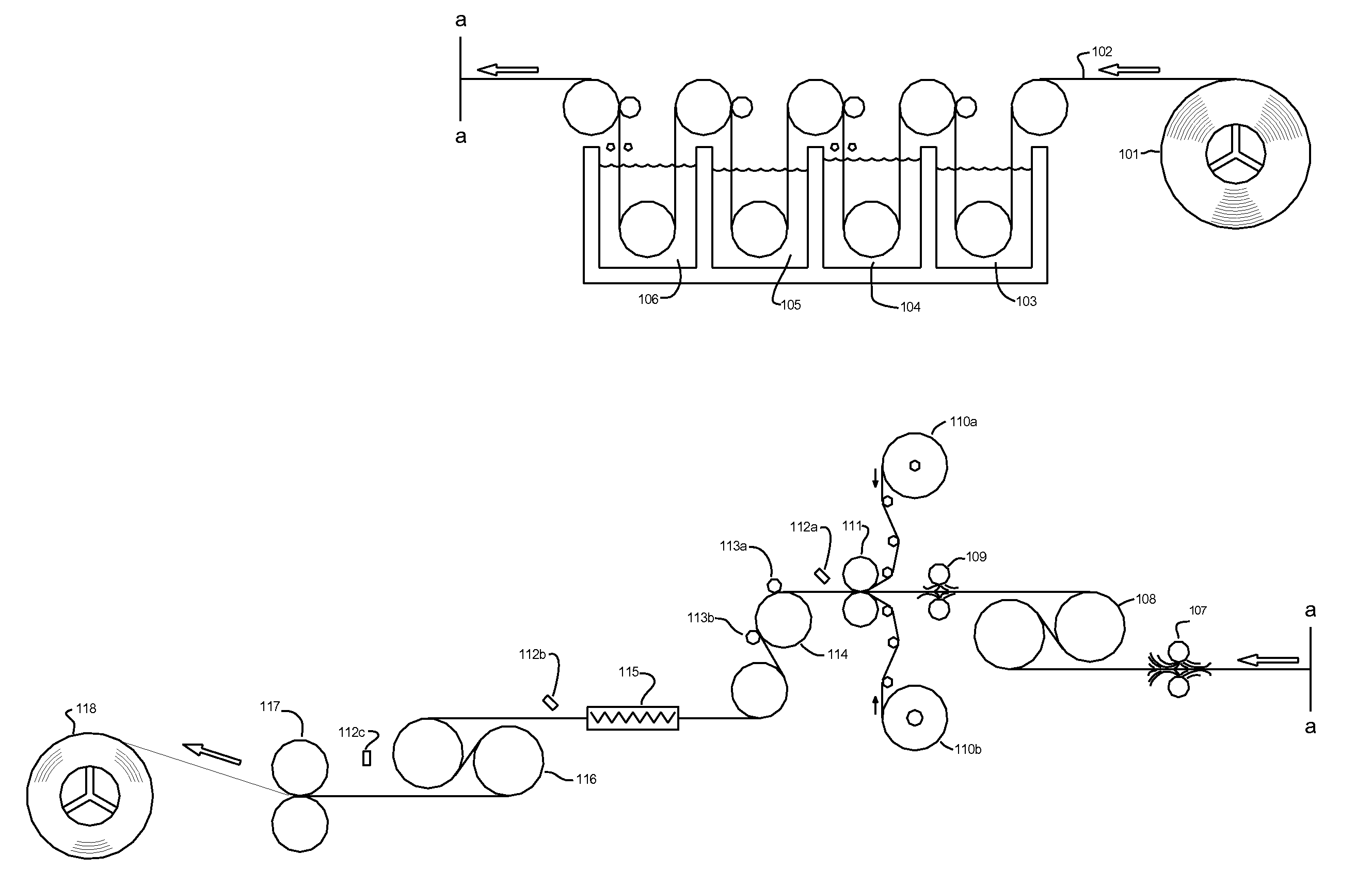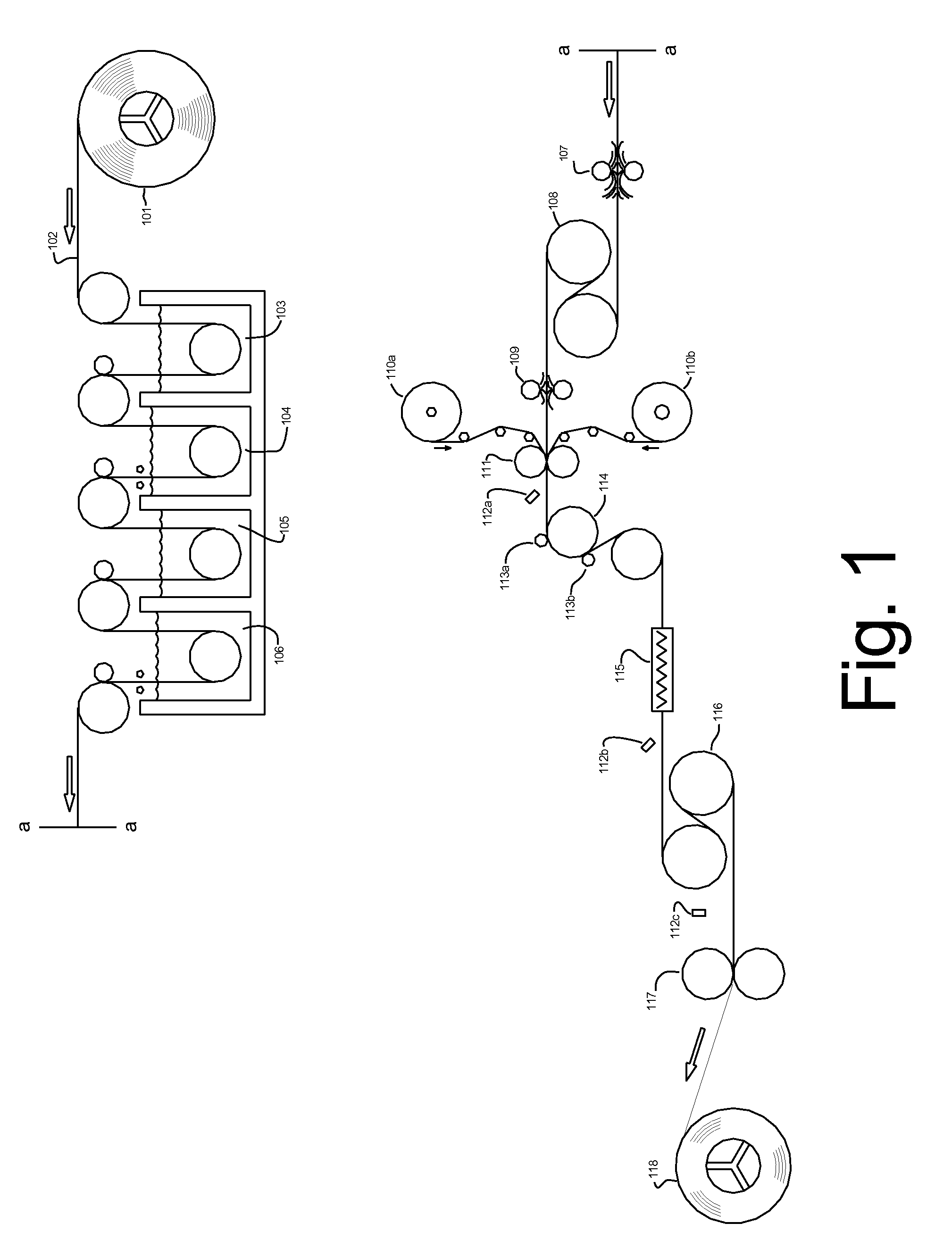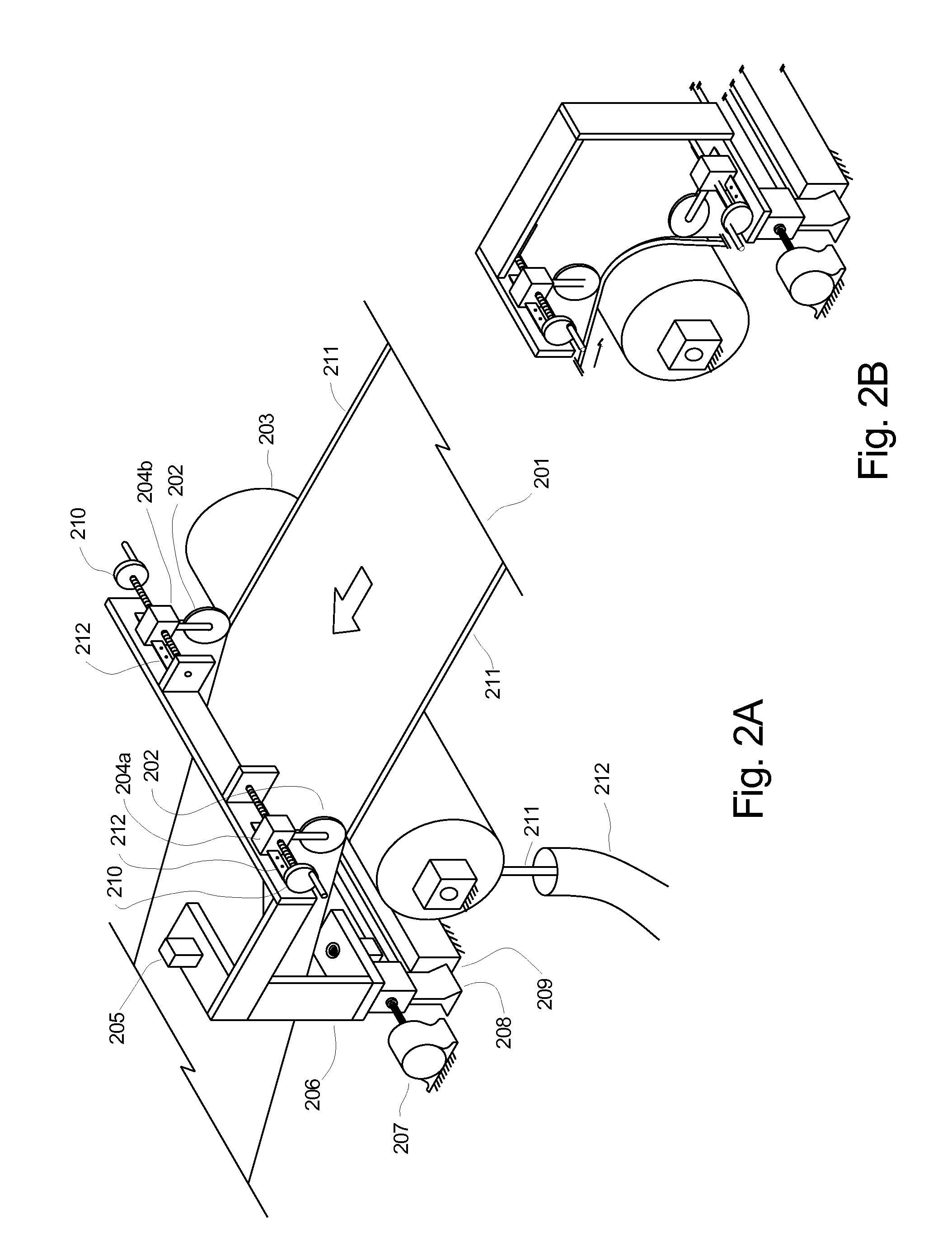There are no commercially practical splicing methods for a moving strip, so strip storage towers are required to allow the entry end of the line to stop while the coil ends are joined.
This makes a continuous
processing line very long, complicated, and expensive.
The speed is normally restricted by the length of
drying oven and the time to cure the paint.
Because commercial coil paint lines have the most favorable economy of scale with a large
production order, it is unattractive to economically coat small orders.
Paint lines commonly charge a premium for painting a one or two coil order due to the higher costs associated with switchover and cleanup time.
It is a difficult technical and operational challenge to coat small orders with economics that allows for practical competition with the large coil paint lines.
Laminating speeds less than 100 fpm become economically unattractive.
Economic film coatings have not been a serious pursuit and are considered expensive compared to paint.
For example, even though the figures in Levendusky et al. show a reel to reel laminating process, many important features and methods required for a convenient, commercially operable, and financially profitable production facility are not taught or disclosed.
In particular, a number of important design, technical, and operational problems must be solved for the commercial viability of a heat based, batch laminating
production line.
A
coating industry has not grown up to
exploit the economic advantages of
thermoplastic films due to the technical, business, operational, and market issues still to be resolved.
One important operating issue for a thermal based laminating line is an economical design for a small production level, about 5-15% of a commercial continuous coil paint line.
The problems of scaling a
coating operation down to a small production level with only the essential
processing steps are raised.
There has not been any practical method disclosed where standard film widths may be utilized for economical film purchases.
It is not desirable to trim both the
metal and film to the correct width after laminating, nor is it desirable to let the excess film width simply overhang the
metal edge.
The overhanging film has a tendency to fold over on top of the metal, causing a severe coil winding defect.
Film shrinkage can also occur due to
crystallinity changes when an oriented film is heated and cooled.
Problems of trimming the excess
polymer width away from the
metal substrate include issues of reliably tracking the metal edge, damage to the
cutting knives by the
metal substrate for minor control errors, difficulties with metal edge sensing under a wider film, and the ability to move knives dynamically without damaging the blade or the blade bearing need to be addressed.
Another commercial operating difficulty is matching the length of a film roll to the strip length.
Difficulties with length matching cause film yield problems and increase operating costs.
It is not economically desirable to discard or recycle partial film rolls.
It is also undesirable to stop the laminating process and change film rolls.
When operating a batch thermal laminating line, it is difficult to completely cover the entire length of a coiled strip.
If the strip preheating is too far from the
polymer-metal nip point at a slow line speed, the metal temperature will be too low or unpredictable for reliable laminating.
Poor temperature uniformity will directly affect laminating quality and yield.
The use of heated rolls to create the preheated metal temperature may be problematical, particularly if the temperature of the metal strip must be varied.
If the strip temperature must be adjusted, the line speed changes, or the metal substrate temperature changes due to pretreatment changes, it is not feasible to rapidly change the roll temperature.
If a heating roll touches the metal surface after
surface energy pretreatment, there is a likelihood of adhesion failure.
In laboratory experience, sporadic and sparse adhesion defects were diagnosed to be caused by this problem.
In particular, once the metal strip is pretreated, the metal surface is likely to pick up
contamination from any debris on any roll it may touch.
However, the laminating quality will be substandard with places of air
entrapment and poor adhesion until the debris is gone.
It is also difficult to accurately monitor the metal temperature just prior to lamination as non-contact sensors in the temperature range below 500° F. are known to be inaccurate and unreliable for metal surfaces such as steel and aluminum.
Laboratory experience indicates that this problem is also clearly related to the
surface energy of the metal substrate.
The line is normally threaded by hand and it is highly troublesome to attempt lamination during the threading operation.
This will cause strip lengths at both ends of the coil to be uncoated with an associated yield loss.
Each type of control has practical operational problems that must be optimized.
The
forced air cooling is a relatively slow process, requiring a long section of line.
The length of the line increases, thereby causing a higher yield loss.
Also, the slower method may cause undesirable
crystallinity effects in the film-metal laminate.
The water quench contacts the polymer surface with a fluid that is difficult to completely remove.
Contacting thermal rolls may have undesirable polymer sticking if the polymer is too hot or the roll surface is damaged.
Also, laboratory observations are that cooling a film-metal laminate utilizing a contact cooling roll can be problematical.
A clicking sound can be heard from the cooling roll due to uneven
thermal control.
Laboratory experience has shown that bits of rubber and metal from the
scratching of rubber covered rolls and steel rolls will affect laminate quality.
An alternative to the existing coil paint technology is currently being sought due to the environmental problems with paint solvents.
 Login to View More
Login to View More 


